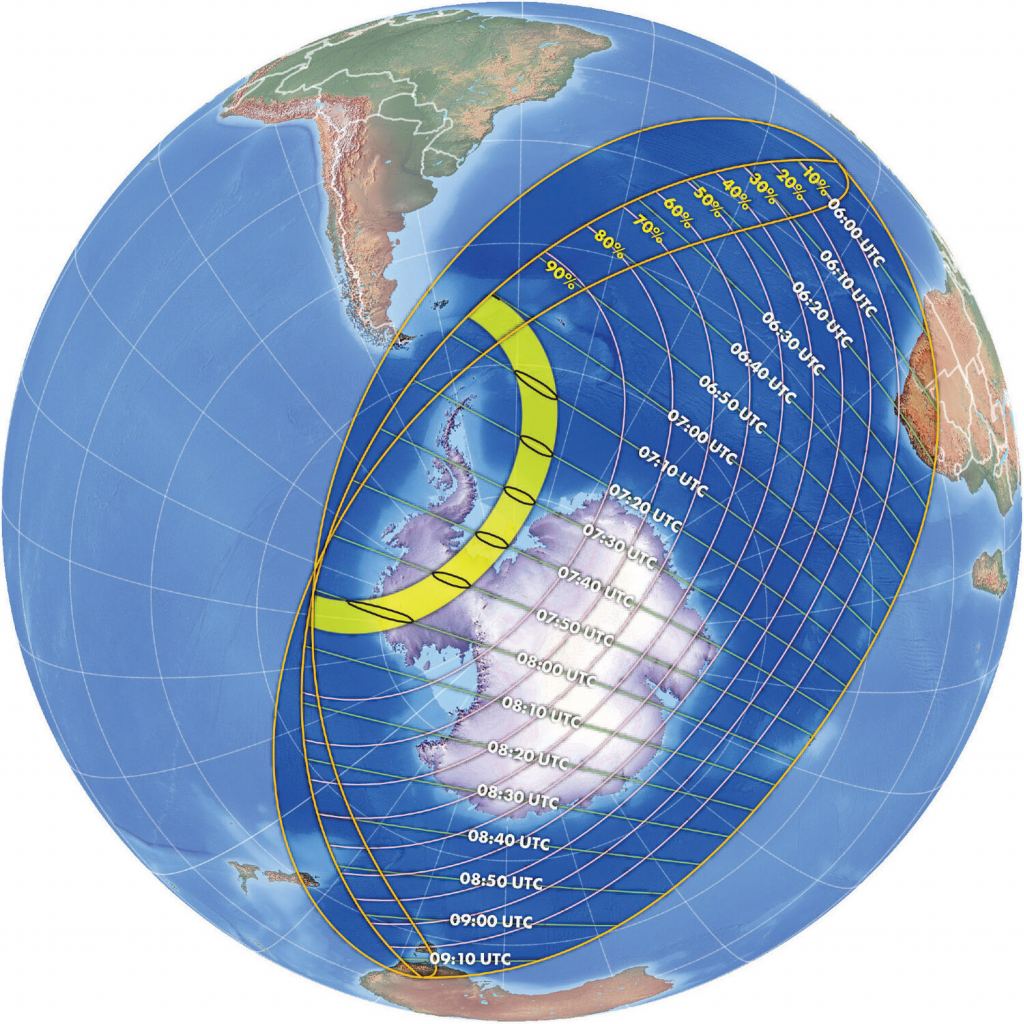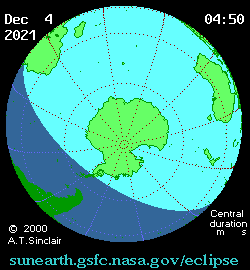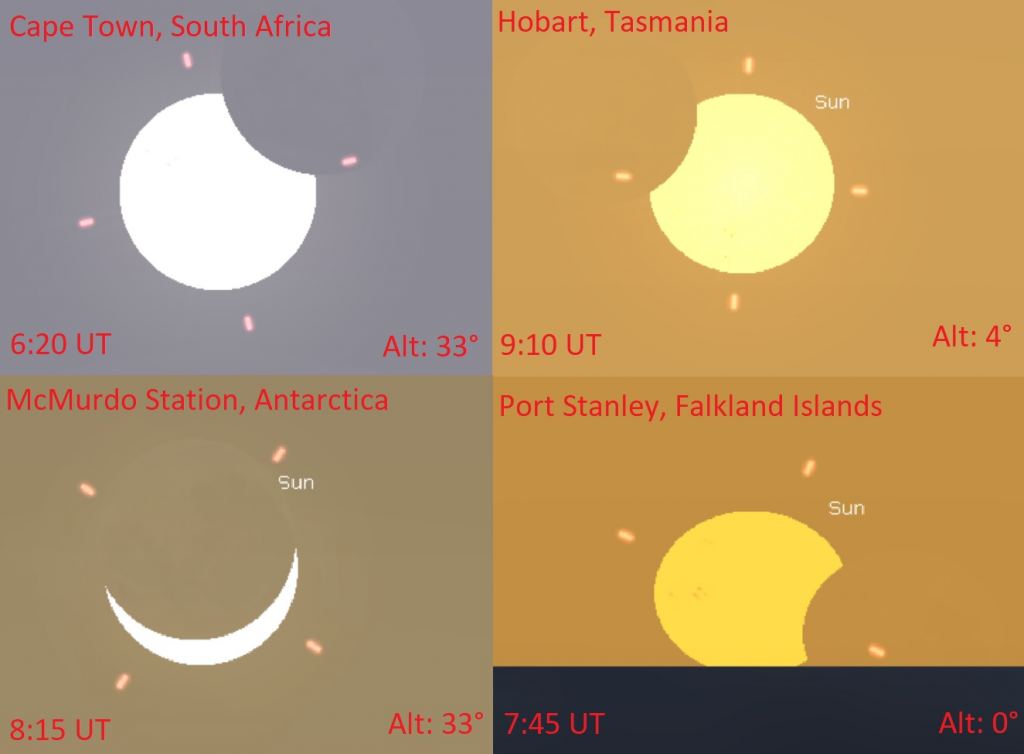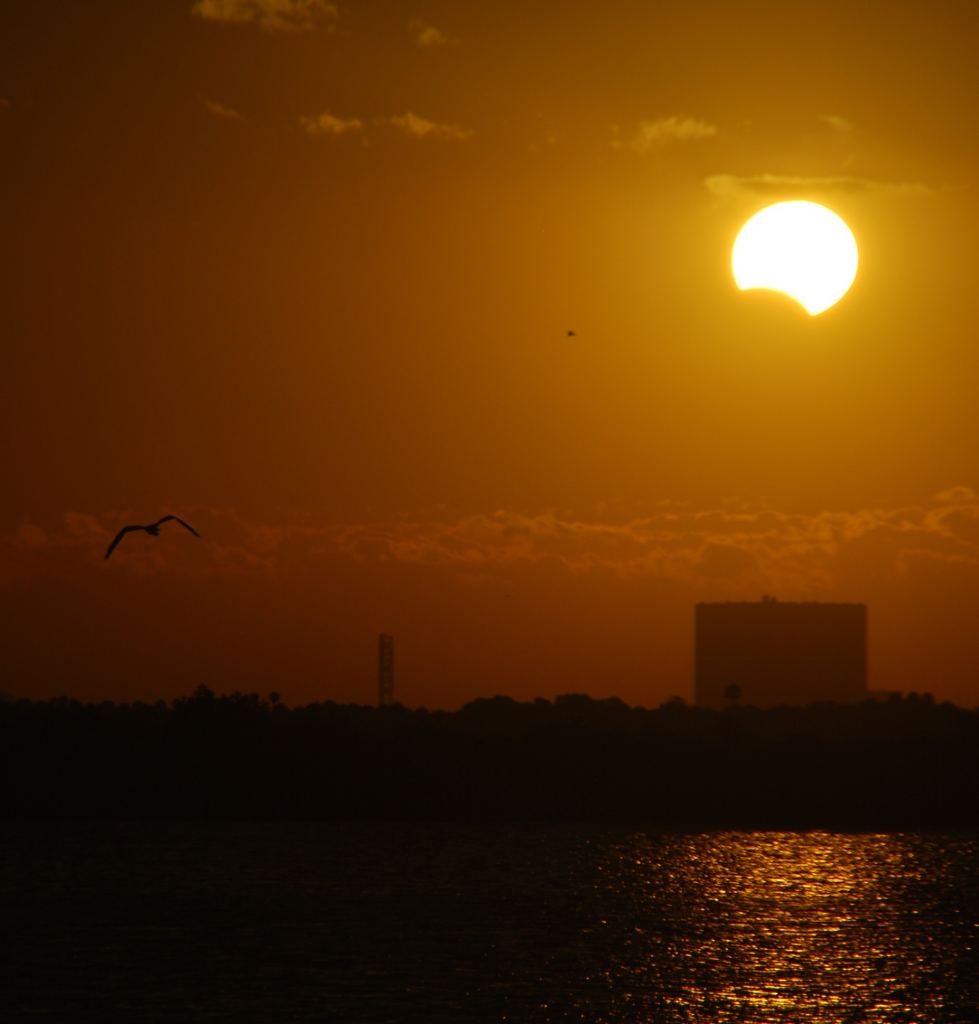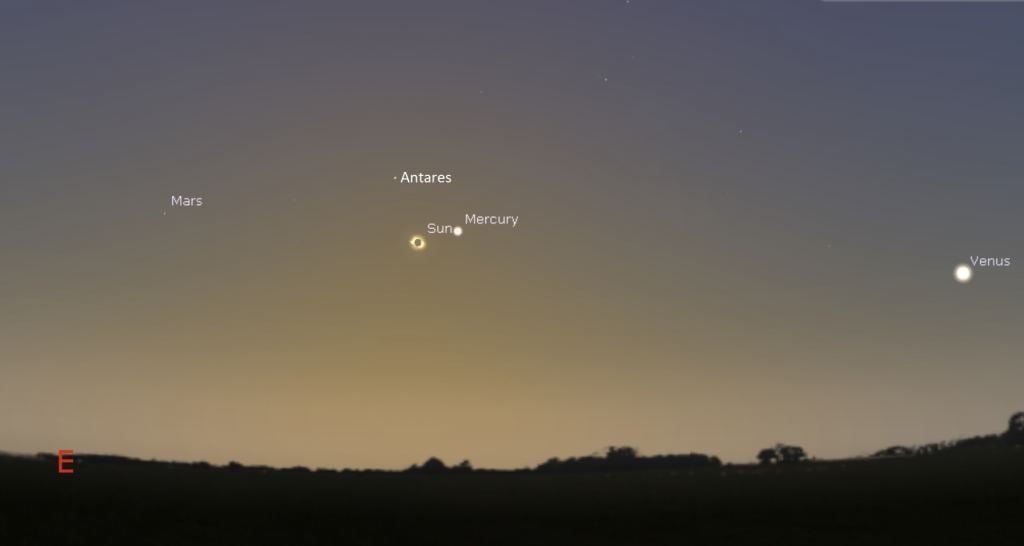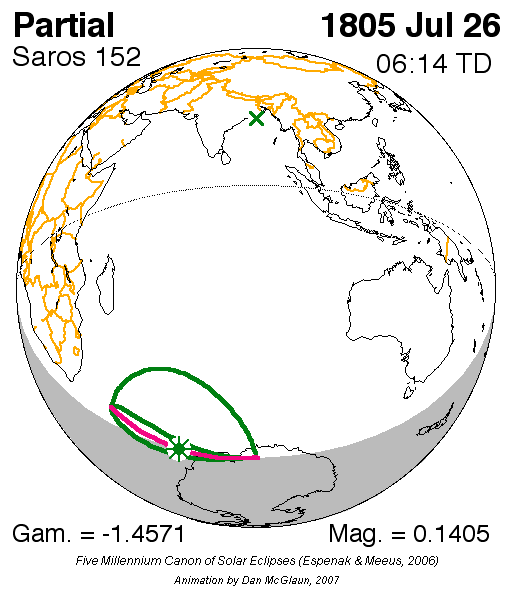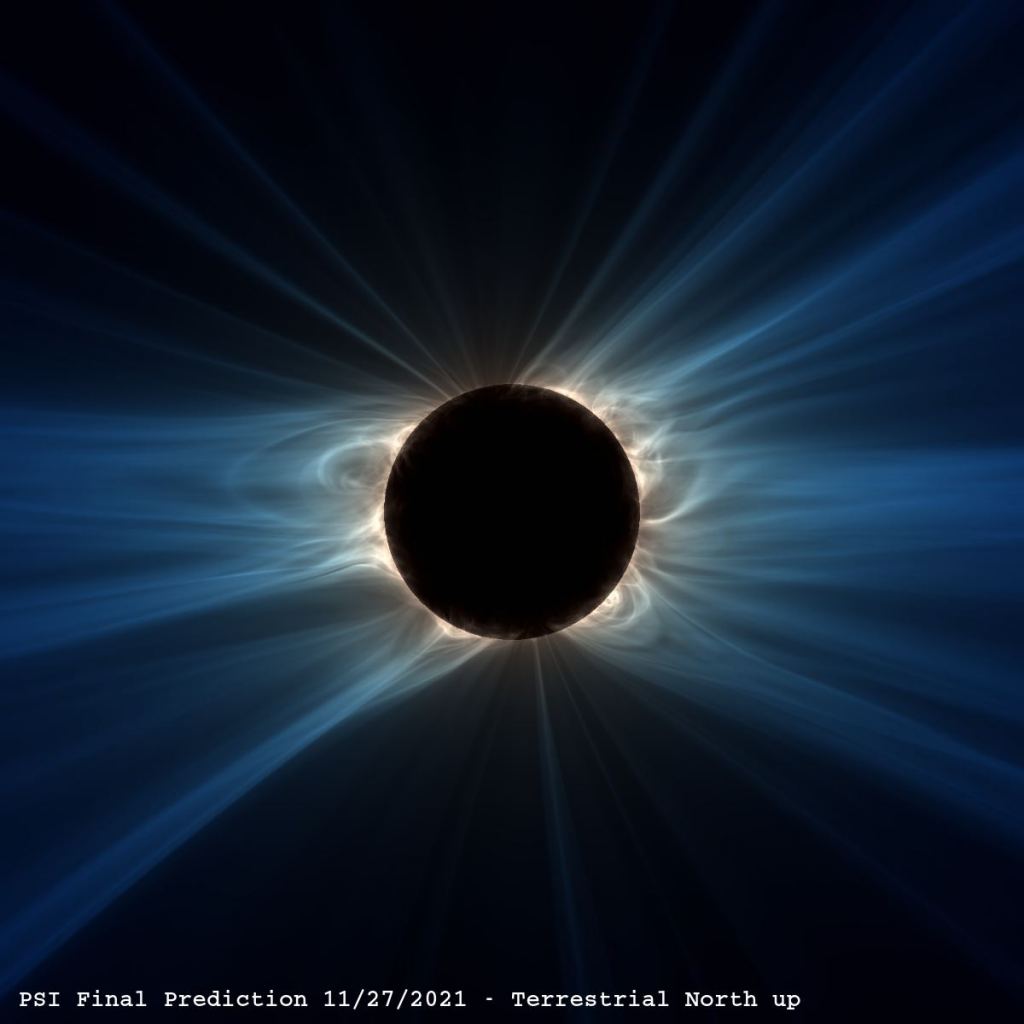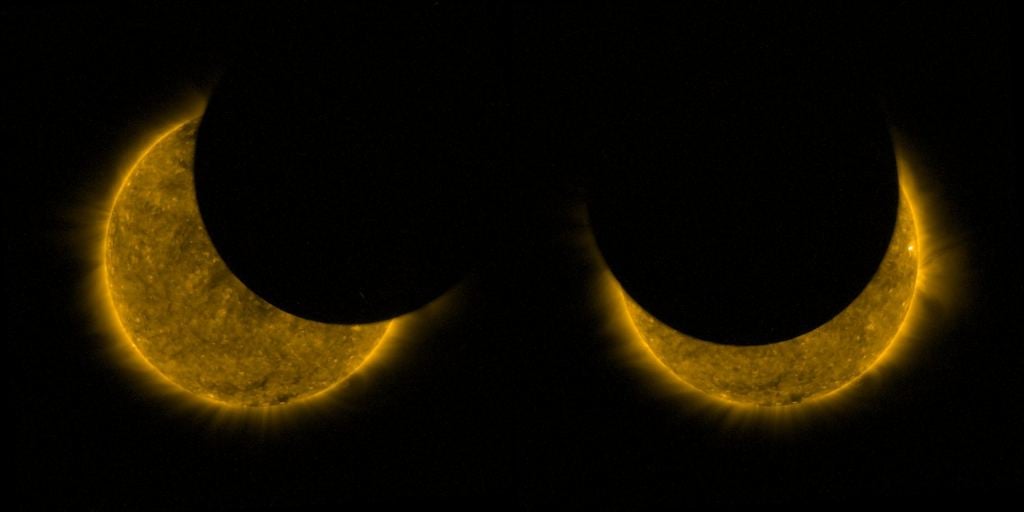During this weekend's total solar eclipse, the shadow of the Moon graces the Earth one last time for the year.
Saturday's total solar eclipse literally spans the ends of the Earth.
The final eclipse for 2021 and the only total solar eclipse of the year occurs on Saturday, December 4th, as the Moon's shadow sweeps across a remote segment of the Antarctic continent.
You almost couldn't design a more remote eclipse. The path for totality manages to very nearly miss every possible inhabited outpost on Earth. The only research station along the path is on windswept Signy Island and Orcadas Station in the far South Atlantic.
Penumbral/partial phases for the eclipse run from 5:29 to 9:37 Universal Time (UT), at just over four hours overall. Totality starts at 7:00 UT as the 418 kilometer-wide umbra of the Moon touches down over the South Atlantic, just east of the Falkland Islands. Maximum eclipse occurs at 7:33 UT over the Weddell Sea, with a duration of 1 minute and 54 seconds. The shadow then sweeps out over Antarctica, and departs the Earth over the South Pacific at 9:37 UT.
Ocean expeditions and charted airborne flights may intercept the eclipse. Unfortunately, Quark Expeditions seems to have canceled plans to sail to totality, forcing many eclipse chasers headed to the departure point in Buenos Aires, Argentina to turn back. The ongoing worldwide pandemic has also clipped the travel wings of many an eclipse chaser over the past two years.
Partial Views Worldwide
But do not despair: though the path of totality is indeed remote, the entire continent of Antarctica sees partial phases of the eclipse. Overall, the partial eclipse also touches the edges of three continents, including the Falkland Islands (South America), South Africa, and Tasmania (Australia). These are all very low to the horizon events transpiring at sunrise or sunset, making for a photogenic eclipse that you can capture along with foreground objects on the horizon.
Don't forget to practice proper eye safety during the partial phases of the eclipse. This means either projecting the Sun for viewing, using optical filters meant for solar observing, or using approved ISO 12312-2 glasses for eclipse viewing (beware of counterfeits!). NASA has a good eclipse safety page still up from the 2017 total solar eclipse.
Also, if you happen to be on a secret-squirrel snowmobile expedition to totality and are reading this, be sure to dress warmly, even though it is headed into austral summer down under… cold temperatures plus wind can equal frostbite in short order, especially on fingertips fumbling to work photographic equipment. I worked U.S. Air Force flight line operations in subzero Alaska at Eielson Air Force Base outside of Fairbanks for years, and found the best cold weather working combination to be heavy outer gloves for insulation plus a light inner glove layer underneath, for quick fine motor work. David Levy once recounted in a talk of courting frostbite during the 2003 total solar eclipse over Antarctica while setting up his camera.
Tales of the Saros
This weekend's eclipse is member 13 of 70 eclipses in relatively new solar eclipse saros series 152. This particular series 'just' started back on July 26th, 1805, and produced its very first total solar eclipse on November 2nd1967. Said 2003 eclipse was actually member 12 of the same solar saros series, 18 years ago. Saros series 152 concludes its run of total solar eclipses on September 14th, 2490, and ends completely with a final shallow partial solar eclipse on August 20th, 3049 AD.
Live (?) From Antarctica
Will the eclipse be carried live? There's a good chance that this may be the first eclipse in a while that wasn't streamed on the web, but we'll let you know if any webcasts do turn up, even from the partial eclipse zones.
Update: Lindblad Expeditions and National Geographic may manage to have a live stream from totality:
What will the Sun look like, come eclipse day? Well, as of writing this, there are a few small sunspot groups currently turned Earthward as Solar Cycle #25 gets underway. That'll make for a photogenic Sun for astro-imagers in the partial zone, versus a featureless blank disk. For the few folks lucky enough to stand in the Moon's shadow during totality, Predictive Science Inc. predicts that the solar corona will look something like this, come eclipse day:
Finally, solar observing missions in low Earth orbit including JAXA's Hinode spacecraft and ESA's Proba-2 may provide brief views of the eclipse from space, as they swoop through the Moon's shadow. GOES weather satellites may also nab the umbral shadow on the Moon crossing the Arctic, as they look back at the Earth (it's happened before).
Near-Future Solar Eclipses
After this weekend, the eclipse action cools down somewhat: 2022 features only two partial solar eclipses, one on April 30thand another on October 25th. 2023 has two more, a hybrid annular-total eclipse on April 20thand an annular eclipse across the Americas on October 14th… and the next purely total solar eclipse? That's none other than the much anticipated eclipse crossing North America on April 8th, 2024. Hey, we're just over two years out now!
Lead image: Totality over Svalbard from 2015. Credit: Geoff Sims.
 Universe Today
Universe Today

